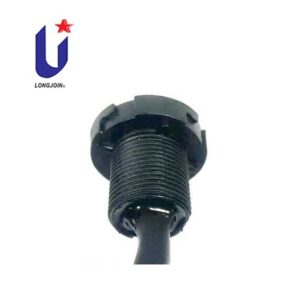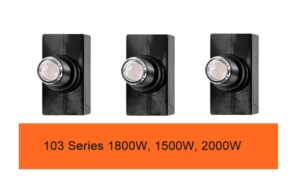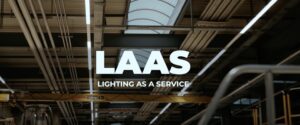2025 Outdoor LED Lighting Market Trends: A Global Forecast to $39 Billion with Smart Integration & Sustainability
Outdoor LED lighting is evolving faster than ever. In 2025, projections are that the global market will hit the $39 billion threshold. This growth is powered by urban expansion and the rise of smart city technologies. Cities around the world are replacing old lights with intelligent, energy-saving systems.
Sustainability is no longer optional—it’s a core demand. From solar-powered solutions to human-friendly designs, outdoor lighting is getting smarter, cleaner, and more connected.

What Are the Key Trends Driving the 2025 Outdoor LED Lighting Market?
There is a perpetual rise in the LED lighting market globally, with remote control lighting at the top. Gone are the days when traditional illumination was enough. Now, cities need smarter and more sustainable lighting systems. Here are some facts showcasing this change.
- Global market projected to reach $39 billion by 2025
- Expected CAGR of 14.92%
- Asia-Pacific remains the fastest-growing region
Key Driving Trends
Urbanization
With over 56% of the global population now urban, this growth is a major catalyst. As cities expand, demand for safe and efficient lighting surges. Traditional lighting systems are no longer viable. LED solutions coupled with photo sensors offer longer lifespans and reduced operational costs—key needs for modern cities.
Urbanization
Regulatory pushes like the EU’s Green Deal, U.S. energy rebates, and India’s national LED programs are another major accelerating factor. These policies are not just about saving power—they boost sustainability while modernizing outdated grids.
Smart Lighting Tech
The biggest leap, however, comes from smart lighting technologies. Iot-enabled LEDS with integrated smart photocontrol receptacles offer a slew of benefits. They include, but are not limited to:
- Remote control
- Adaptive dimming
- Real-time diagnostics
These features enable up to 50% in energy savings, while reducing maintenance trips and system downtimes. This makes smart LED systems a strategic choice, not just an upgrade.
How Iot-Integrated outdoor LED lights with photocell Systems are Becoming Mainstream?
Smart outdoor LED lighting is becoming standard across major cities. It’s not just about brightness—it’s about control and savings. With IoT and photocontroller integration, cities are lighting smarter and operating leaner.
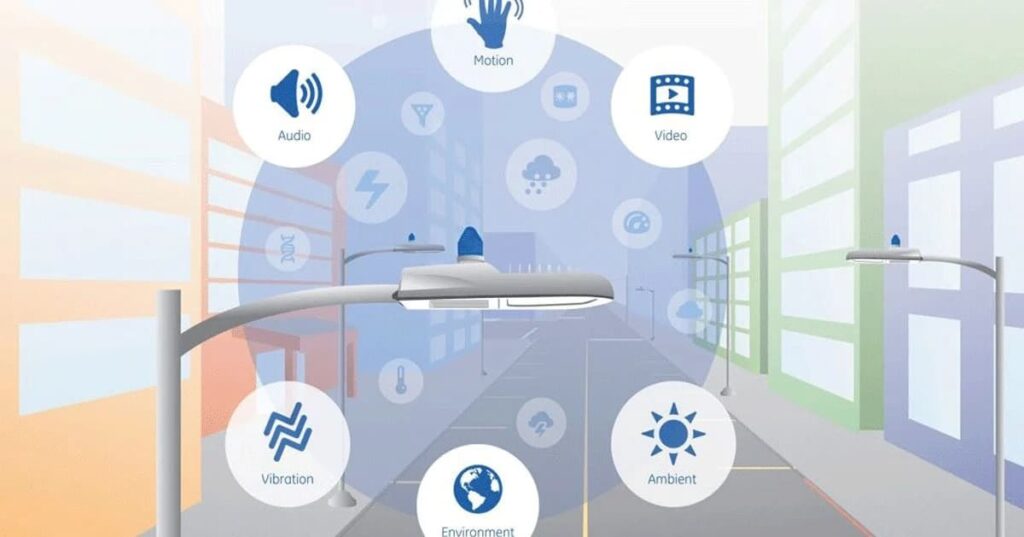
Modern LED systems now come with wireless control. City managers can dim lights, track faults, and adjust schedules from a dashboard. These systems adapt to real-time conditions like traffic, weather, or daylight. It means less energy wasted and fewer manual checks.
This shift isn’t gradual—it’s accelerating. Cities that once saw lighting as a static asset now see it as part of a live digital network. Light sensor switches, nodes, and cloud software are turning poles into data points. The result? Faster maintenance, longer product life, and measurable savings.
The Case Study of Los Angeles
This city has overhauled its street lighting with photocontrollers, and the results are promising. The table below outlines the details:
Key Metric | Outcome |
Total streetlights converted | Over 215,000 |
Annual energy savings | 63% cut in electricity use (≈112 GWh saved) |
Annual cost savings | $9 million saved in utility costs |
System used | Philips CityTouch with mobile nodes |
CO₂ emissions reduction | 47,000+ metric tons per year |
How Is Solar-Powered LED Lighting Gaining Traction in Remote Areas?
The quest for renewable energy sources is gaining traction around the globe. Solar energy is specifically transforming remote and underserved regions. These areas often lack stable grid access, but sunlight is abundant.
Solar-powered LED lighting is one aspect of this. For emerging markets, the appeal is clear. Solar LEDs are low-maintenance, cost-effective, and independent of central power. They offer instant lighting infrastructure without waiting for grid extension. Governments and donors are backing these projects with strong incentives.
The case of India
has scaled rural lighting dramatically. According to IBEF and MNRE data:
- Over 1.7 million solar street lights have been installed across India as of 2023
- The government aims to push this number past 3 million by 2026
- Focus regions include Uttar Pradesh, Bihar, and northeastern states
These systems have cut diesel generator use and improved nighttime safety in rural zones
The case of Africa and Southeast Asia
Africa and Southeast Asia are also catching on. Kenya and Indonesia are installing solar outdoor LED lights with photocells in villages without the grid. In many cases, these lights support local businesses, reduce crime, and enable longer school hours.
The message is simple. Solar LEDs are not just eco-friendly—they’re life-changing for places the grid can’t reach. And with falling panel prices and growing support, the pace is only picking up.
How Is Human-Centric Design Shaping the Future of Outdoor Lighting?
Lighting is no longer just about visibility. It’s about well-being. Human-centric lighting (HCL) is reshaping public spaces with comfort, health, and safety in mind.
HCL uses tunable white LEDs. These lights adjust color temperature and brightness based on the environment or time of day with the help of photo sensors. Warmer tones reduce glare and promote calm. Cooler tones enhance focus and visibility during peak hours.
This isn’t just tech for the sake of it. Studies show that thoughtful lighting can reduce stress and improve sleep patterns. In outdoor settings, it helps cut light pollution while still ensuring safety. Below is a table dealing color temperatures in HCL.
Color Temperature | Kelvin (K) Range | Impact on Humans & Environment |
Warm White | 2200K – 3000K | Promotes relaxation; reduces glare; minimal disruption to wildlife |
Neutral White | 3500K – 4100K | Enhances alertness without being too harsh; good for moderate traffic |
Cool White | 5000K – 6500K | Increases visibility and focus; may contribute to light pollution if misused |
Tunable White | 2700K – 6500K | Allows time-of-day adaptation; supports circadian rhythm and reduces overlighting |
Case Study Of Berlin
- Project name: Smart Street Lighting Berlin
- Tech used: Tunable white LEDs with adaptive brightness control
- Key goals: Reduce light pollution, enhance safety, and increase pedestrian comfort
- Notable feature: Lights shift from cool white in early evening to warm white at night
- Outcome: Residents report less harsh glare and more natural ambiance
What Are the Regional Trends Driving Outdoor LED Lighting Market Growth?
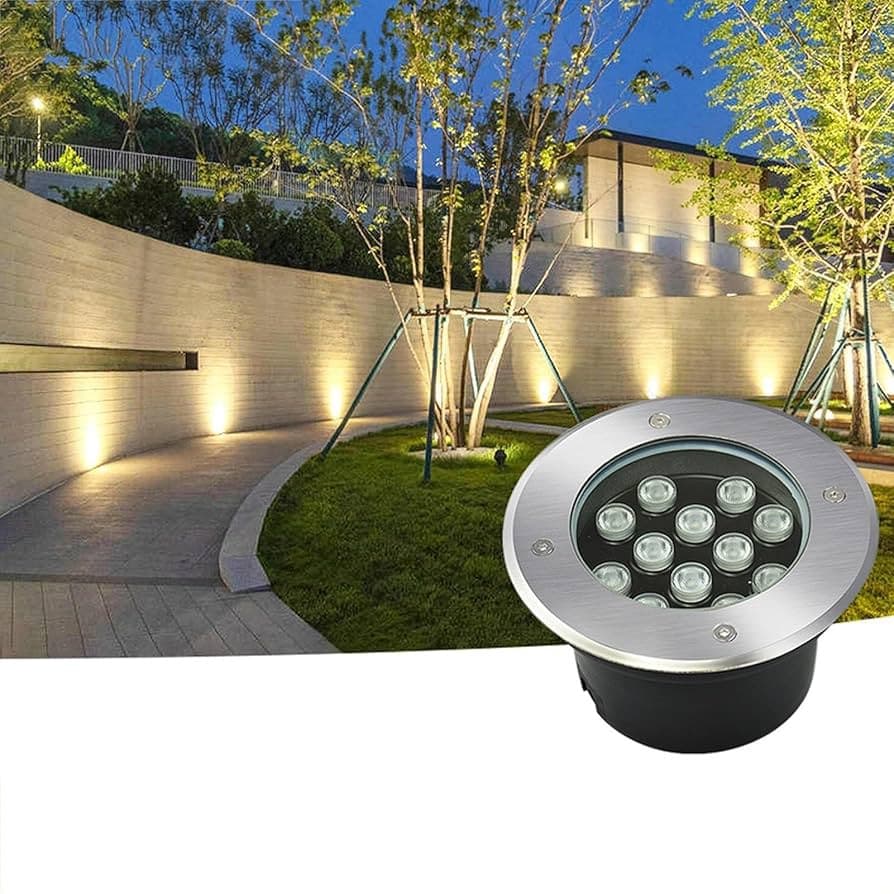
North America
The region has a significant share of the outdoor LED lighting market. Usually, it’s driven by government policies and smart city initiatives. Federal and local programs offer tax credits and rebates. Smart city projects across the United States and Canada integrate IoT-enabled photoelectric sensors LED systems.
Asia-Pacific
This region, led by China and India, is also witnessing a rapid growth in the LED market. Efficient lighting could be an effective solution to cater to the fast-paced urbanization needs. Policy from the government also encourages energy saving and smart city development.
Europe
The region has strict energy efficiency laws and environmental regulations. Its Ecodesign Directive requires environmental standards for energy-consuming products. This encompasses lighting systems in order to minimize the environmental burden.
Here is a table detailing the market value and CAGR of these regions.
Region  | Market Value (2025) | Projected Market Value (2030) | CAGR (2023–2030) |
USD 2.88 billion | USD 3.5 billion (est.) | 3.97% | |
USD 3.9 billion | USD 5.1 billion (est.) | 5.13% | |
USD 2.57 billion | USD 3.41 billion (est.) | 5.81% |
What Is the Impact of Smart City Lighting Projects on LED Adoption? Eindhoven’s Case Study
Eindhoven, Netherlands, implemented the Philips CityTouch system. The city aims to modernize its street lighting infrastructure through light sensor photocell switches.
Key Features of the Implementation:
- CityTouch allows city officials to monitor and control street lighting remotely through a web-based interface.
- The system enables dimming and scheduling of lights based on real-time data. This leads to significant energy savings.
- Fault detection is automated, allowing for quicker response times and reduced maintenance costs.
Outcomes:
While specific figures for Eindhoven’s energy savings were not publicly disclosed. Here are some similar examples:
- Los Angeles achieved a 63% reduction in energy consumption and saved approximately $9 million annually.
- Guadalajara, Spain reported immediate electricity savings of approximately 68% and an annual CO₂ emission reduction of nearly 4,200 tons.
What Does the Future Hold for Outdoor LED Lighting?
The trends for the lighting market are changing. Smarter, connected, and cleaner systems are leading the way. Integration with IoT, AI, and data-driven controls will soon be the norm. Cities aim to lower emissions and cut costs—LEDs fit both goals.
Sustainability is no longer a choice; it’s a necessity. Businesses need to innovate accordingly. Forward-thinking manufacturers will shape the future. The push is clear: smarter streets, greener cities, and lighting that adapts in real time.
Final Words
The outdoor LED lighting market is evolving fast. Smart tech and sustainability are shaping its future. Cities and businesses must adapt or fall behind. For reliable smart light controllers, choose long-join product categories. Their solutions are tested, efficient, and built for tomorrow’s needs.
External Links
●https://www.precedenceresearch.com/outdoor-led-lighting-market
●https://www.worldbank.org/en/topic/urbandevelopment/overview
●https://commission.europa.eu/strategy-and-policy/priorities-2019-2024/european-green-deal_en
●https://lalights.lacity.org/connected-infrastructure/led_program.html
●https://byjus.com/free-ias-prep/ujala-scheme/
●https://de.wikipedia.org/wiki/Human_Centric_Lighting
●https://www.mordorintelligence.com/industry-reports/north-america-outdoor-led-lighting-market
●https://www.mordorintelligence.com/industry-reports/asia-pacific-outdoor-led-lighting-market
●https://www.mordorintelligence.com/industry-reports/europe-outdoor-led-lighting-market


